Submitted:
11 April 2023
Posted:
12 April 2023
You are already at the latest version
Abstract
Keywords:
1. Introduction
Geometric Properties of Complex & Dual Numbers
Dual-Quaternions
Algebra and Fractals
Contribution

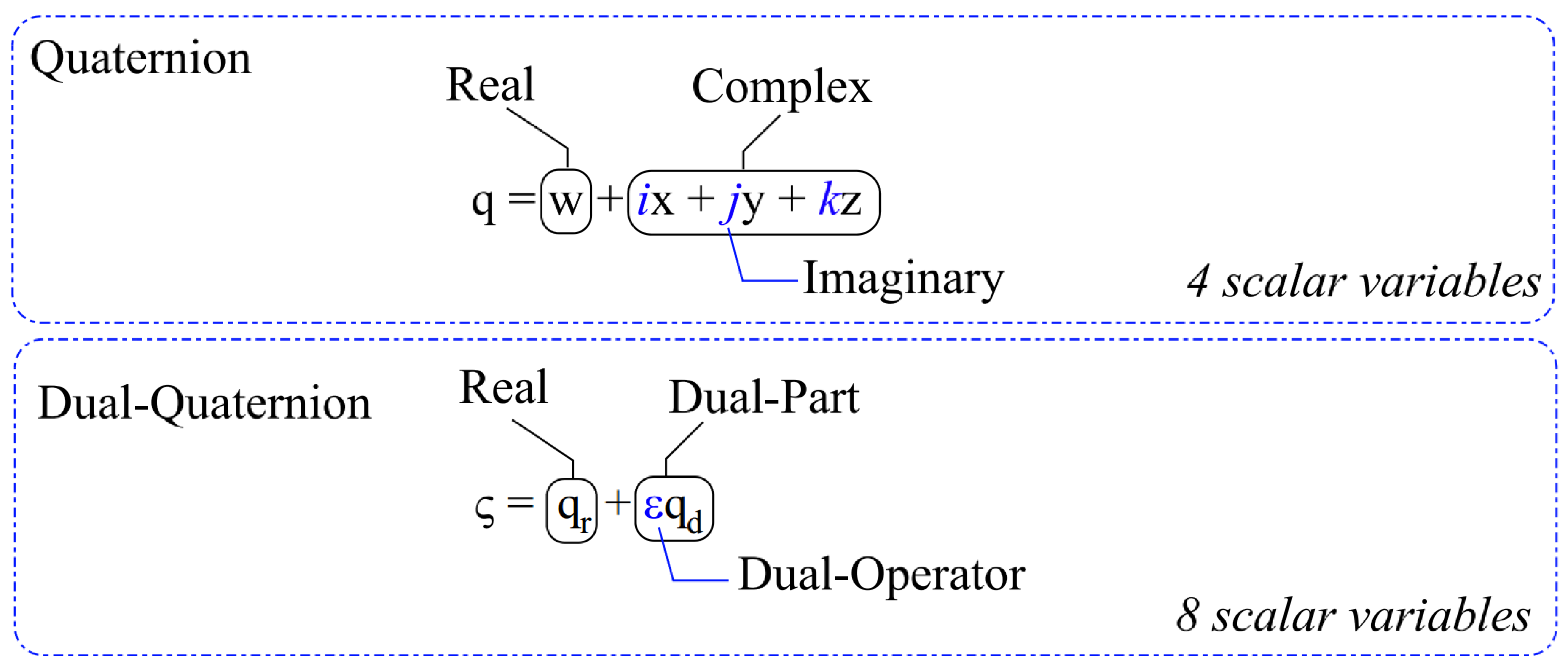
2. Related Work
Quaternions to Dual-Quaternions
Fractal Geometry
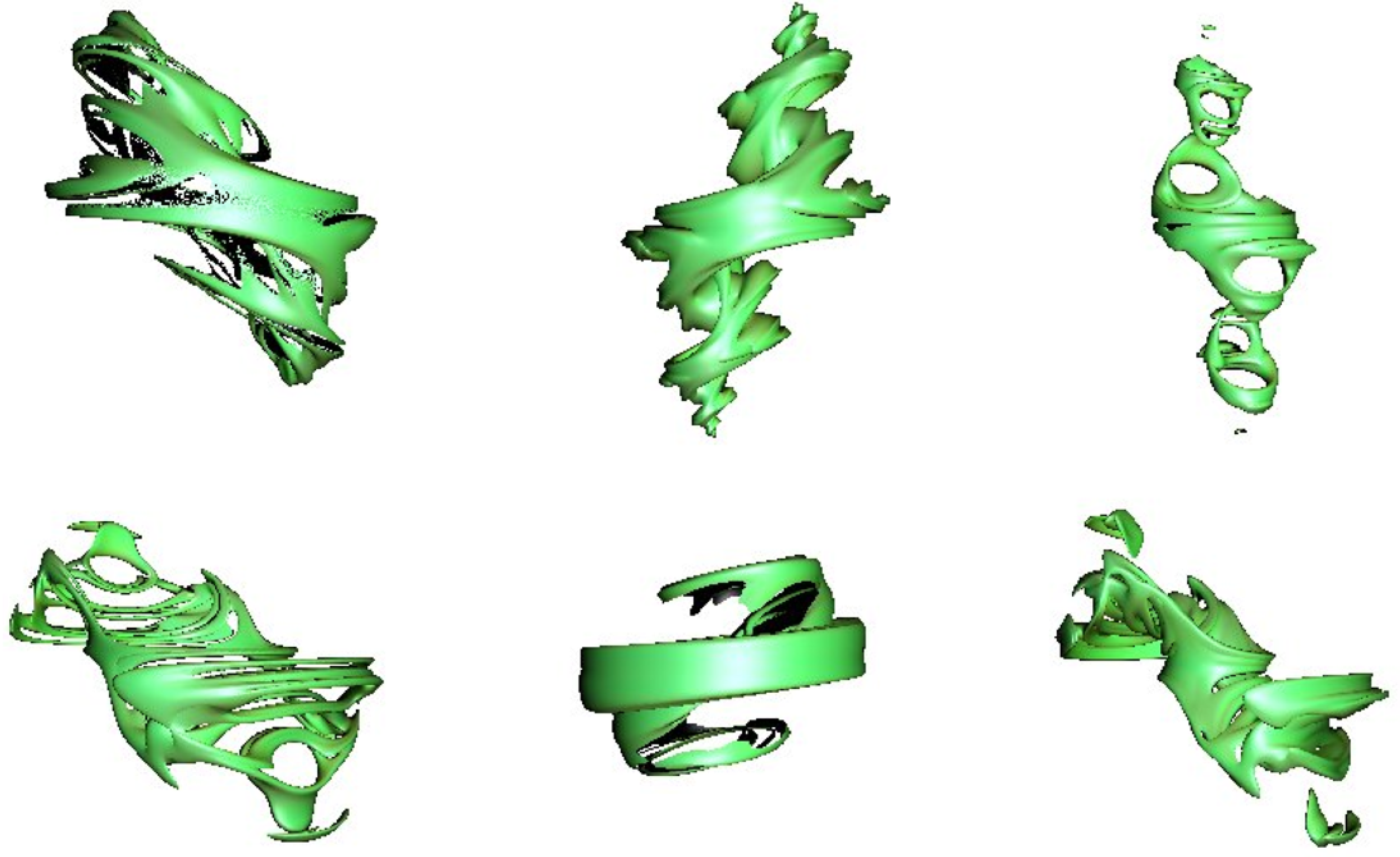
3. Method
Julia Set Fractals
Quaternion Julia Sets

Dual-Quaternion Julia Sets
Practical Considerations
Dimension Reduction
Ray-Marching
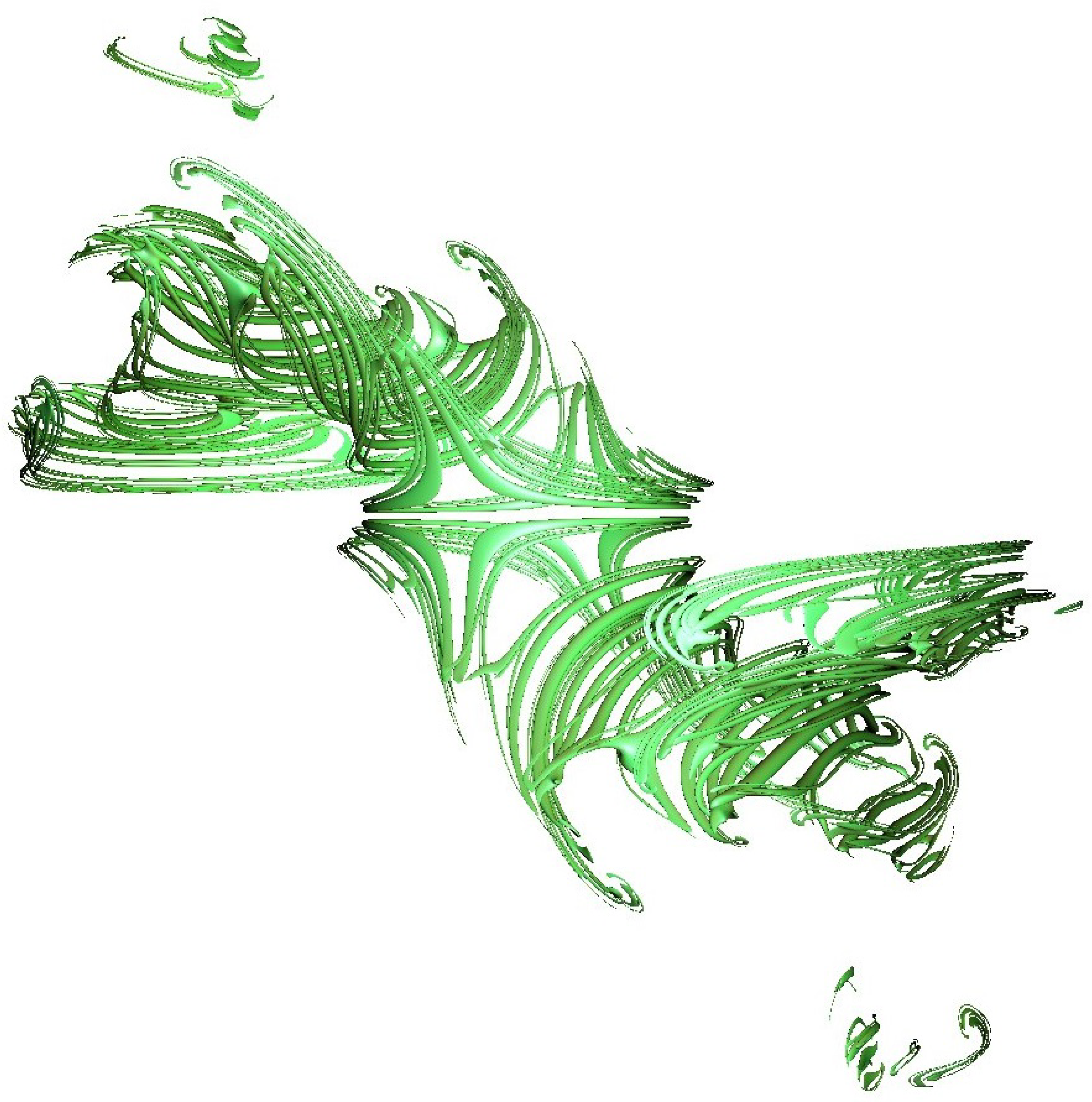
Lighting/Illumination

Graphical Processing Unit (GPU)
4. Experimental Results
Parameter Tuning/Experimenting
5. Conclusion/Discussion
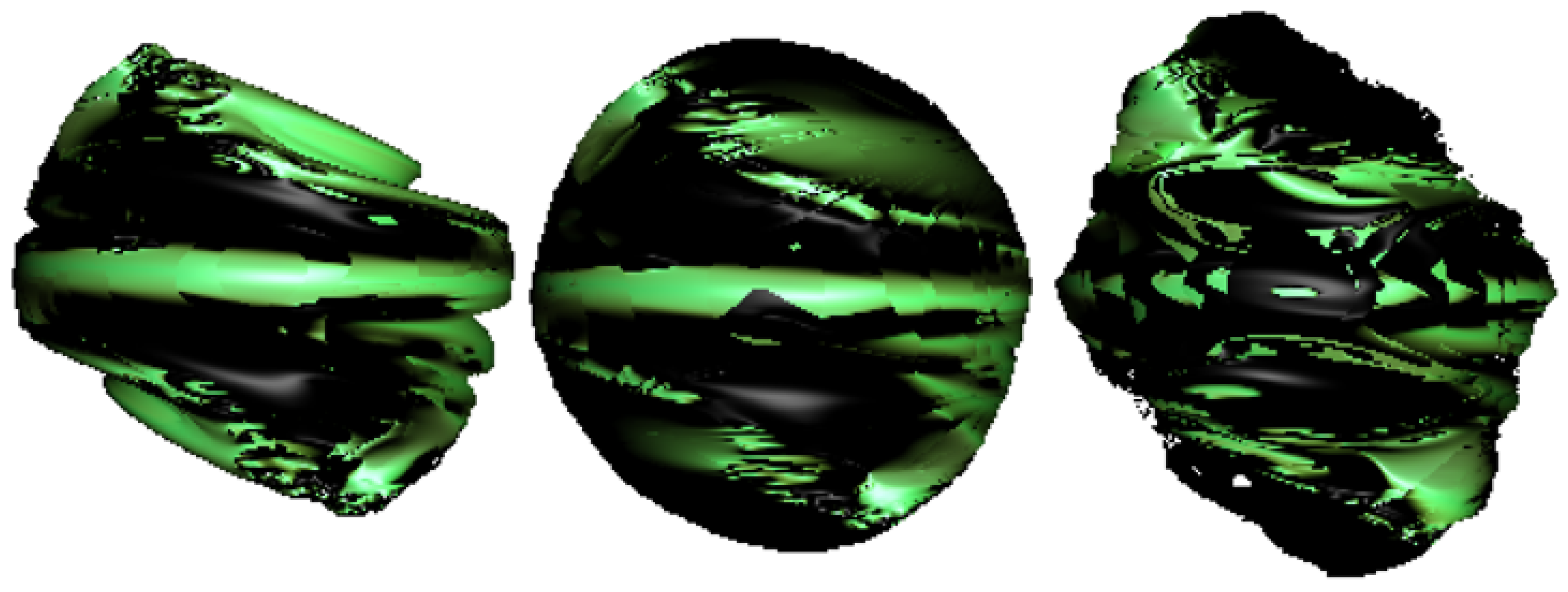
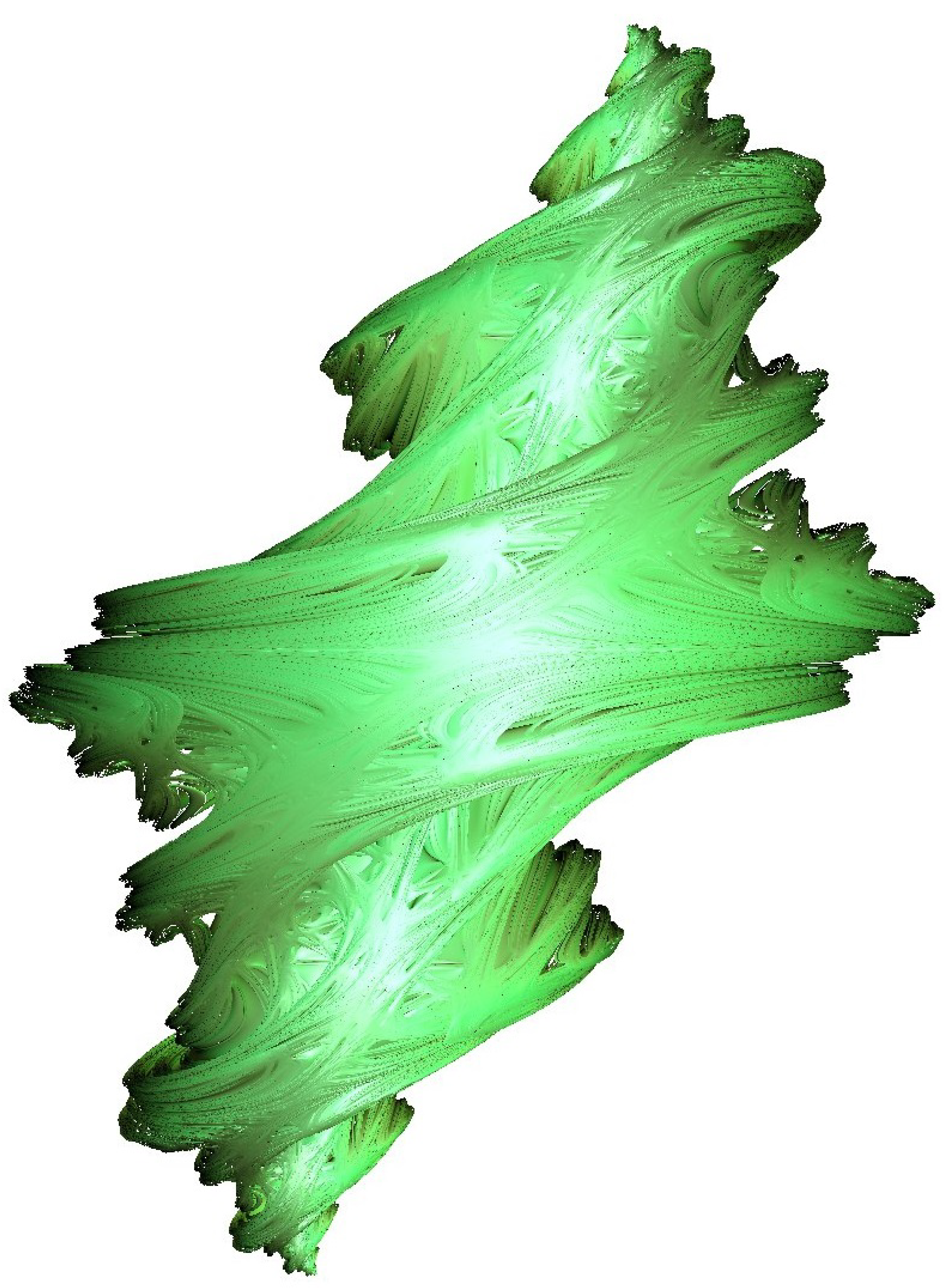
Appendix
Quaternion Operations
- addition:
- additive identity:
- scalar multiplication:
- multiplication:
- multiplication identity:
- dot product:
- magnitude:
- conjugate
Dual-Quaternion Operations
- dual-quaternion:
- scalar multiplication:
- addition:
- multiplication:
- conjugate:
- magnitude:
References
- Wang, X.; Yu, C. Feedback linearization regulator with coupled attitude and translation dynamics based on unit dual quaternion. Intelligent Control (ISIC), 2010 IEEE International Symposium on. IEEE, 2010, pp. 2380–2384.
- Clifford, W.K. Mathematical papers; Macmillan and Company, 1882.
- Kenwright, B. A Beginners Guide to Dual-Quaternions: What They Are, How They Work, and How to Use Them for 3D character hierarchies. The 20th International Conference on Computer Graphics, Visualization and Computer Vision, WSCG 2012 Communication Proceedings, 2012, pp. 1–13.
- Kavan, L.; Collins, S.; Žára, J.; O’Sullivan, C. Geometric skinning with approximate dual quaternion blending. ACM Transactions on Graphics (TOG) 2008, 27, 105.
- Frey, I.Z.; Herzeg, I. Spherical skinning with dual quaternions and QTangents. SIGGRAPH Talks, 2011, p. 11.
- Selig, J. Rational interpolation of rigid-body motions. In Advances in the Theory of Control, Signals and Systems with Physical Modeling; Springer, 2010; pp. 213–224.
- Vasilakis, A.; Fudos, I. Skeleton-based Rigid Skinning for Character Animation. GRAPP, 2009, pp. 302–308.
- Kuang, Y.; Mao, A.; Li, G.; Xiong, Y. A strategy of real-time animation of clothed body movement. Multimedia Technology (ICMT), 2011 International Conference on. IEEE, 2011, pp. 4793–4797.
- Ke, Y.; Panduranga, E.S. A journey into the fourth dimension. Proceedings of the 1st conference on Visualization’90. IEEE Computer Society Press, 1990, pp. 219–229.
- Crane, K. Ray tracing quaternion julia sets on the gpu, 2005.
- Pickover, C.A. Chaos and Fractals: A computer graphical journey; Elsevier, 1998.
- Norton, A. Generation and display of geometric fractals in 3-D. ACM SIGGRAPH Computer Graphics. ACM, 1982, Vol. 16, pp. 61–67.
- White, D. www.fractalforums.com - www.skytopia.com - Search for Mandelbulb section (http://www.skytopia.com/project/fractal/mandelbulb.html). (Accessed Online 06/02/2018), 2007.
- Mandelbrot, B.B. The fractal geometry of nature; Vol. 173, WH freeman New York, 1983.
- Hart, J.C.; Sandin, D.J.; Kauffman, L.H. Ray tracing deterministic 3-D fractals. ACM SIGGRAPH Computer Graphics. ACM, 1989, Vol. 23, pp. 289–296.
- Hart, J.C.; Kauffman, L.H.; Sandin, D.J. Interactive visualization of quaternion Julia sets. Proceedings of the 1st conference on Visualization’90. IEEE Computer Society Press, 1990, pp. 209–218.
- Dang, Y.; Kauffman, L.H.; Sandin, D.J. Hypercomplex Iterations: Distance Estimation and Higher Dimensional Fractals; Vol. 1, World Scientific, 2002.
- Zadick, J.; Kenwright, B.; Mitchell, K. Integrating Real-Time Fluid Simulation with a Voxel Engine. The Computer Games Journal 2016, 5, 55–64.
Disclaimer/Publisher’s Note: The statements, opinions and data contained in all publications are solely those of the individual author(s) and contributor(s) and not of MDPI and/or the editor(s). MDPI and/or the editor(s) disclaim responsibility for any injury to people or property resulting from any ideas, methods, instructions or products referred to in the content. |
© 2023 by the authors. Licensee MDPI, Basel, Switzerland. This article is an open access article distributed under the terms and conditions of the Creative Commons Attribution (CC BY) license (http://creativecommons.org/licenses/by/4.0/).



